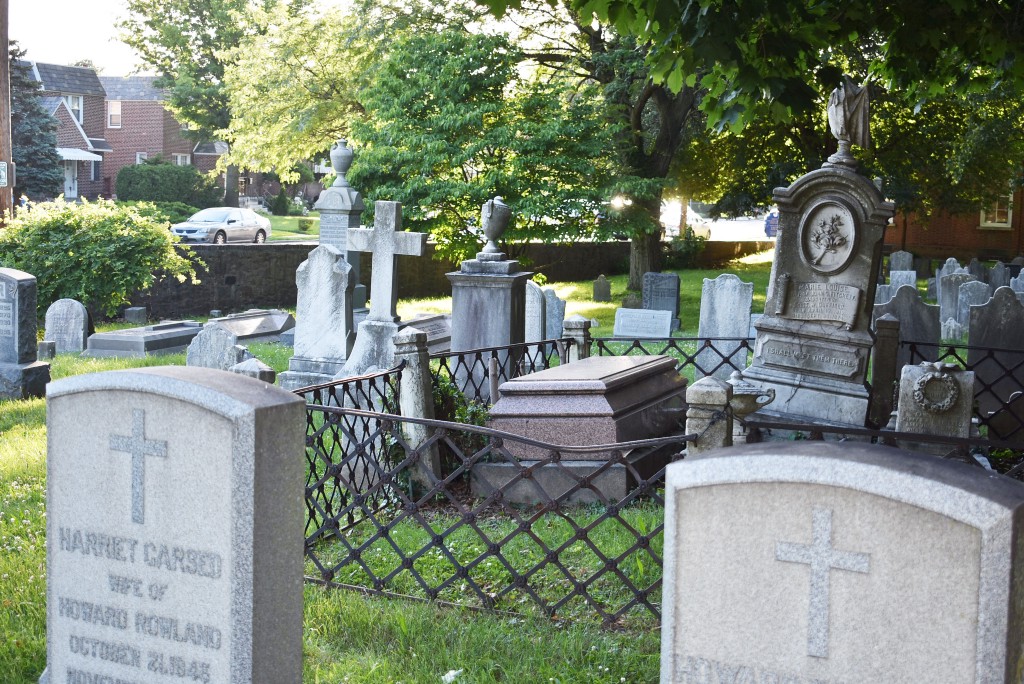Caesar Penrose purchased approximately two acres of land from the estate of Benjamin Cottman in 1816. This parcel adjoined the original church property connecting it with Rising Sun Avenue, where Trinity Oxford Parish House now stands.

By Fred Moore
Kudos to Klak, McCracken and Sammin.
Trinity Oxford, with its well-tended graveyard, is a marvelous repository of early Northeast Philadelphia history. Duffields, Cottmans, Leechs, to name a few.
There is also Caesar Penrose (1737–1831), a man of color and sexton of the church for more than 50 years. Who was Caesar Penrose?
As with so many Americans of African descent, that is extremely difficult to determine. The name Penrose in colonial Philadelphia almost certainly comes from Bartholomew Penrose (1674–1711), William Penn’s partner in shipbuilding.
Bartholomew was married to Ester Leech (1682–1713), daughter of Toby Leech (1652–1726), a prominent member of and contributor to Trinity Oxford Church. Their son, Thomas Penrose (1710–1758), carried on his father’s shipbuilding operation.
Thomas’s will mentions a “Negro Man Peter” and a “Negro Man named Abraham” but no Caesar. The will also mentions “my apprentices & Negrows” at the shipyard.
From 1756 to 1770, Ebenezer Kinnersley (1711–1778), Benjamin Franklin’s associate in the discovery of electricity and buried at Pennepack Baptist Church, received payment from the Academy of Philadelphia (later University of Pennsylvania), where Kinnersley was a professor, for “his Negro’s Services” (See Penn Slavery Project.)
In a letter dated March 13, 1773, Kinnersley writes from Bridge-town, Barbados to his wife, Sarah Duffield (1718–1802), that “Caesar was taken very ill last week.”
This Caesar was likely Kinnersley’s enslaved man while at the Academy. Sarah Duffield’s uncle, Thomas Duffield (1691–1758), was a vestryman and treasurer of Trinity Oxford for 30 years.
Many of Thomas’s descendants are buried at Trinity Oxford, among them his son Jacob Duffield (1724–1774), who married Hannah Leech (1723–1793), niece of Esther Leech Penrose.
Could Kinnersley’s Caesar have been Caesar Penrose? Possibly. More research is needed there.
Caesar Penrose, Trinity Oxford Sexton, purchased approximately two acres of land from the estate of Benjamin Cottman in 1816. This two-acre parcel, a portion of which was Penrose’s residence, adjoined the original 1700 three-acre church property connecting it with Rising Sun Avenue, where Trinity Oxford Parish House now stands.
Trinity Oxford purchased the Penrose parcel in 1857. The immediate Parish House property at Rising Sun and the original Trinity Oxford parcel at Oxford Ave are both on the Philadelphia Register of Historic Places.
It seems fitting to include the connecting parcel on the Register as well, to honor the “Good and faithful servant,” Caesar Penrose. ••
Fred Moore is a local historian.





